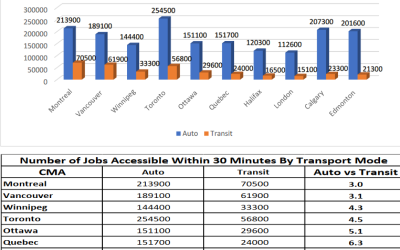How were your holidays? Not long enough? It probably seemed that way if you were one of tens of thousands of Canadians squandering precious time waiting for taxis to bring you shopping or home from office parties. The Christmas season is the least wonderful time of the year to get a cab, but this one was likely the worst ever: In Calgary, one livery firm reported customers waiting for hours. In Vancouver, Edmonton and Winnipeg, residents complained about similar delays. Even in little Maple Ridge, B.C., Colleen Wynnyk, owner of Ruskin’s Shake and Shingle Pub, put signs in her bar warning customers who drink not to count on a cab home.
Things are only going to get worse. In nearly every North American city, taxis are controlled like an arm of local government, and wherever you live, it’s almost certain your city has done a lousy job keeping up with rising demand. City Halls decide how many cabs operate, by capping the number of taxi plates; how many drivers can drive them, by rationing licences; what taxis can charge, by setting fares; and what services they must offer, requiring onboard amenities such as credit card processors and GPS systems. Toronto even makes it illegal for cabs to be more than five years old — presumably riding in a 2001 Crown Vic is a hardship none of us should have to endure.
Regulating cabs, as provinces do bars, is one thing. But cities have gotten “away from regulating the taxi business and into micromanaging it” — that’s how one uniquely lucid Calgary alderman once put it to me. Calgary hasn’t added any cabs since 1986, when the city was 60% its current size. Edmonton hasn’t increased taxis in more than a decade. No plates have been issued in Montreal since 1984. And Vancouver, with the lowest taxi-to-resident ratio in the country, saw fit to create just 20 new cab licences in the 20 years prior to last year, despite welcoming hundreds of thousands of new residents and tourists.
Once out of print, taxi plates become limited edition treasures. Those bought in Calgary for $175 in the ’80s demand $150,000 on the aftermarket — still cheap compared to Montreal, where they fetch a cool quarter-mil.
You can’t even buy plates in Vancouver: Owners instead offer “shares” in their company — at about $500,000.
At that rate, most drivers will be forever stuck paying high rents to plate holders, like “modern urban sharecroppers,” in the words of Jerry Fruin, a University of Minnesota transport economist. This in a business that was once the best foot-in-the-door for new immigrants who needed nothing but a car, a driver’s licence and a work ethic to get ahead. Now, the average cabbie toiling 100-hour weeks likely falls below Statistic Canada’s poverty line.
The system doesn’t help the rest of us, either. Taxi shortages hit hardest customers without cars: the poor, disabled and elderly. Cops link cab scarcities to increased drunk driving. In Calgary last fall, a woman was sexually assaulted walking home one night after her cab didn’t show. Meanwhile, environmentalists and city planners know that reliable taxi services make it easier to live downtown, keep cars off the road and feed passengers to public transit.
The next time your mayor brags about his commitment to greenness or public safety, ask what he’s doing to get more cabs on city streets. Toronto is the only major Canadian city to at least try: In 1998, it created a program allowing aspiring taxi owner-operators to buy special new, non-transferable plates. Plate-owners sued, claiming it would mean “too many” taxis, whatever that means. Since then, Toronto’s added 1,200 new cabs. A few American cities have gone further, eliminating licence quotas entirely. In every case, the plate panjandrums have tried blocking deregulation through the courts. They have yet to win.
Cities, after all, aren’t in the business of protecting taxi cartels from competition; they’re supposed to ensure citizens are served by proper public infrastructure. Maybe next Christmas, Canada’s municipal politicians could give their cities the gift of getting out of the taxi business, and let us all spend more time with our families, and less time waiting for cabs that may never come.
Kevin Libin is Alberta correspondent for the National Post.


